ESCAPE
Curious Karoo critters
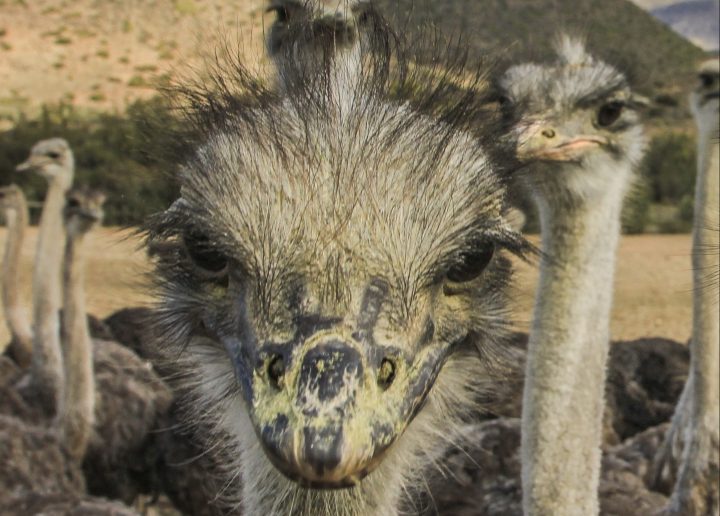
The Karoo is replete with beastly tales, some true, others laden with salt and legend – but always highly entertaining. Witness exhibits below.
John’s giraffe
There are many sought-after tomes of exploration, hunting and general overland adventures in Africa to be found in John Donaldson’s Books & Prints Shoppe in Richmond, Northern Cape. And then you get to the stuffed giraffe lurking at the end of a long, cluttered corridor and you wonder about it.
“I acquired the giraffe to settle a debt,” says Donaldson.
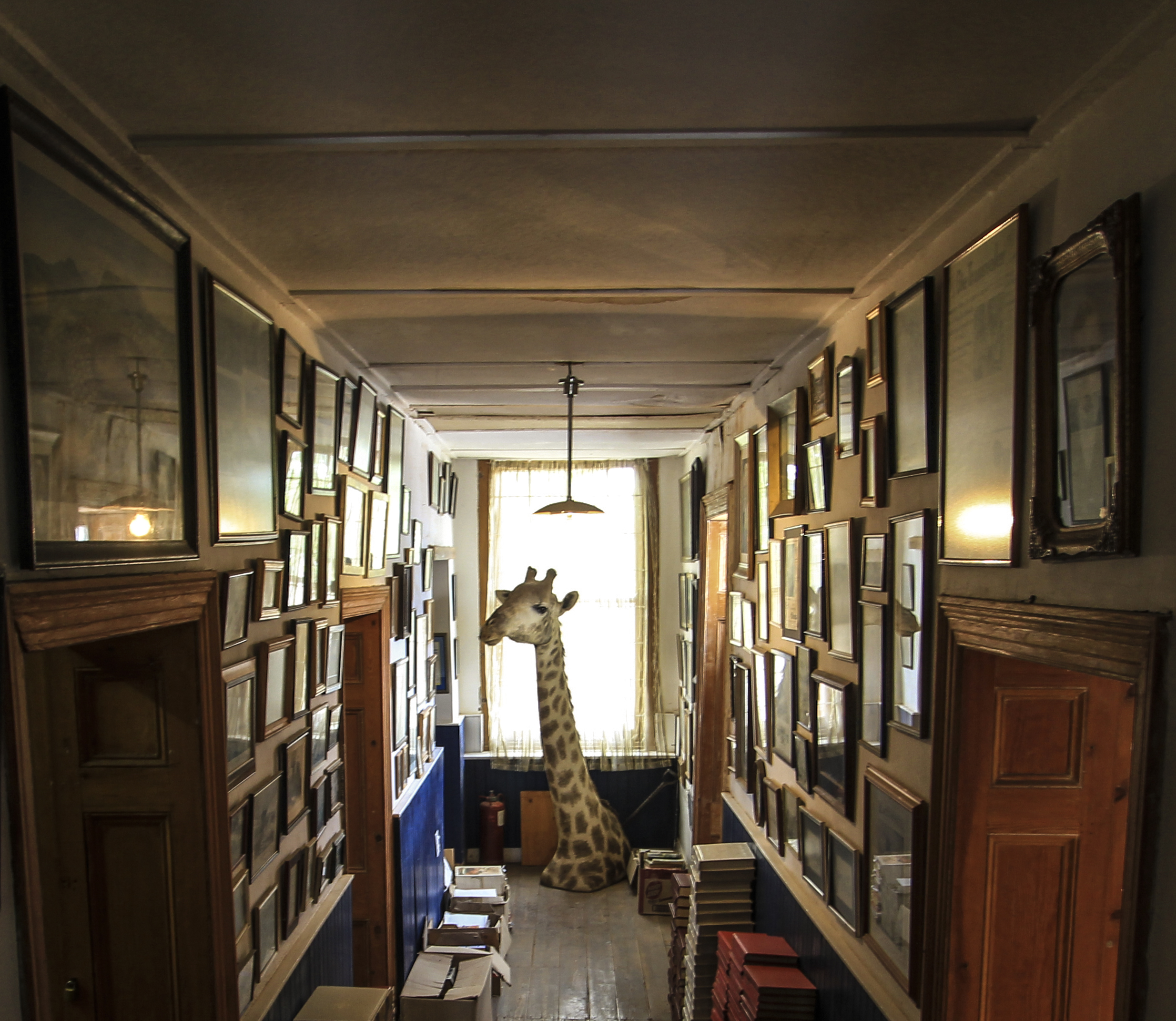
John’s giraffe. (Photo: Chris Marais)
“A mechanic in Roodepoort owed me money and couldn’t come up with the cash. So I said give me something in return. So he handed me two trophies, one of a kudu and one of a giraffe. And now the giraffe lives here. I’m not sure where the kudu lives these days.”
The circus lover
Boys lucky enough to grow up in the Karoo have always kept an astonishing variety of household pets, including meerkats, snakes, hedgehogs, parrots and pigeons. Most of them outgrow this love of ‘animal familiars’ as adulthood arrives.
Not Frank Wilke Jnr of Aberdeen in the Eastern Cape. No, young Frank started a tortoise zoo in the village and soon moved on to baboons, jackals, monkeys, porcupines and all manner of suricate.
As the years passed he expanded his menagerie into an export business and moved the zoo to the outskirts of Aberdeen for added space. At one stage he could boast a collection of more than three dozen lions in his care.
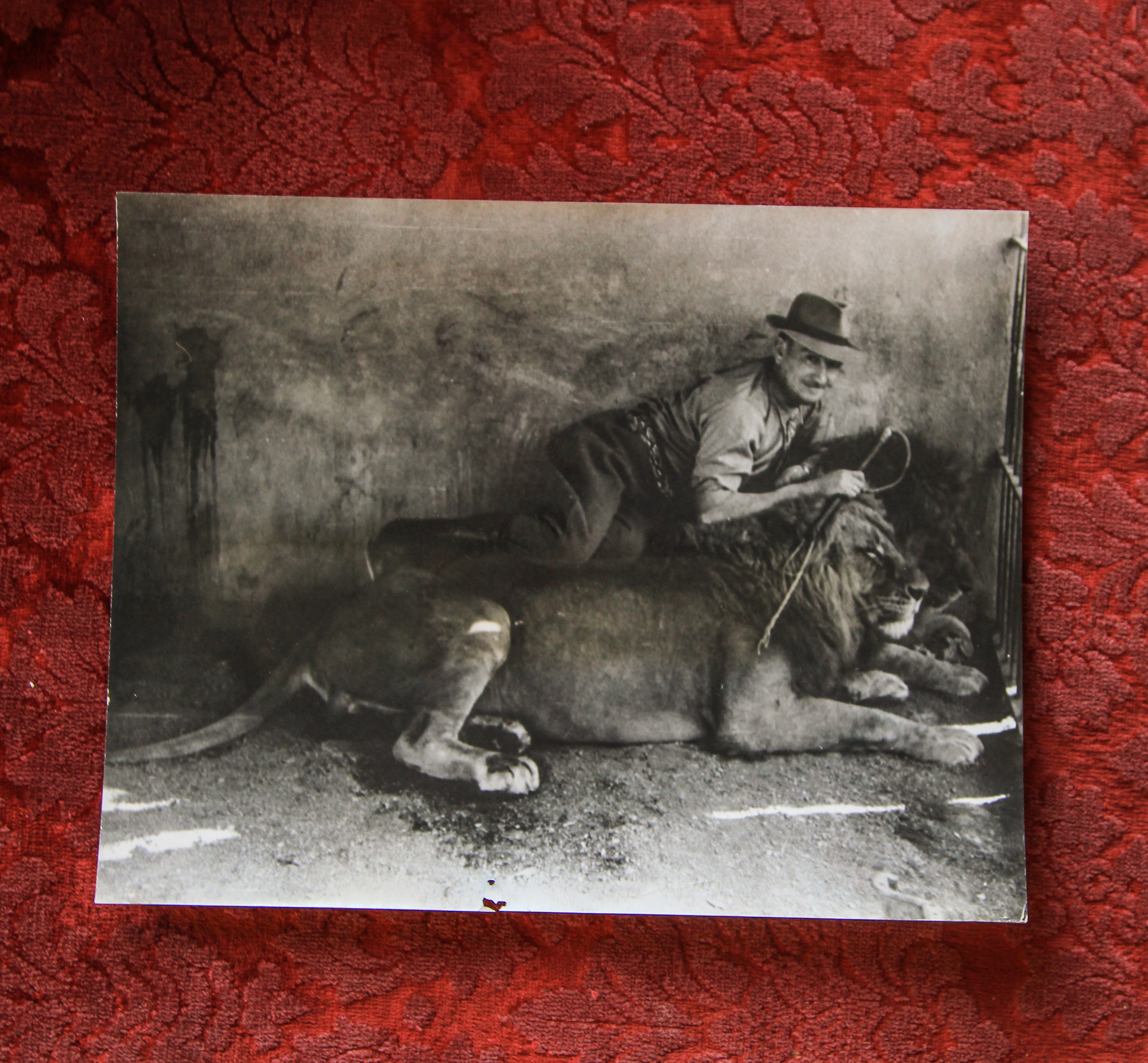
(Photo: Chris Marais)
Frank had a special love for the circus, and performing lions in particular. To that end, he bought Tikkie and Tokkie from Boswell’s Circus and they soon became local darlings.
He also bought up all the Pagel Circus beasts in 1950 for the sum of £4,000. The Strongman of the South African circus world was Wilhem Pagel, whom Frank Wilke idolised. In fact, he named his Aberdeen mansion Pagel House in honour of the big fellow.
About 70 years ago, small-town Karoo folk could pose for photographs right next to a brace of Frank Wilke’s lions. They were quite safe, because he cunningly inserted a thick pane of plate glass between person and predator.
Hello Sailor
If you were a boy ostrich tootling along the R62 minding your own business, admiring the lovely Swartberg Mountains and loving the morning sun on your plumes, you would be advised to watch out for the sirens of the Little Karoo.
Don’t be fooled by their drab feathers. Look, instead, at their beautiful lashes, their curvy mottled beaks and the come-hither glow in their eyes. Listen and preen as they ooh and aah over your incredible flame-toned legs and short-step tripply dance moves.
Such a girl ostrich would probably make you behave in the most outrageous way. You could well end up writhing and thrumming your neck with pleasure, fluttering your wings as if you were suddenly in the leading role in a burlesque show mostly reserved for big birds only.
The act itself has epic qualities that are not always reflected in the coital behaviour of the female. While you’re heaving away in delight, she will probably busy herself with absent-minded pecking at the ground. Hence the term “bird brains”.
Legend has it that down in Montagu town during the Victorian era, the good burghers were utterly shocked, dismayed and perhaps a little envious of the mating habits of local ostriches in the farm paddocks.
They were particularly upset at the romance dance that takes place before the act itself, and forbade ostrich farmers in the area to publicly display their horny birdstock.
Crows, foxes and stars
Roger Young of Kruis Rivier outside Calitzdorp in the Little Karoo is quite well known for coming up with wise Afrikaans sayings, often winning him dollops of accidental respect in his neighbourhood.
His work logo is a tandem image of a howling jackal and a streaming comet tail.
“When I came out here in 2006, Comet McNaught was in the sky and, on my first night, jackals were calling close by.”
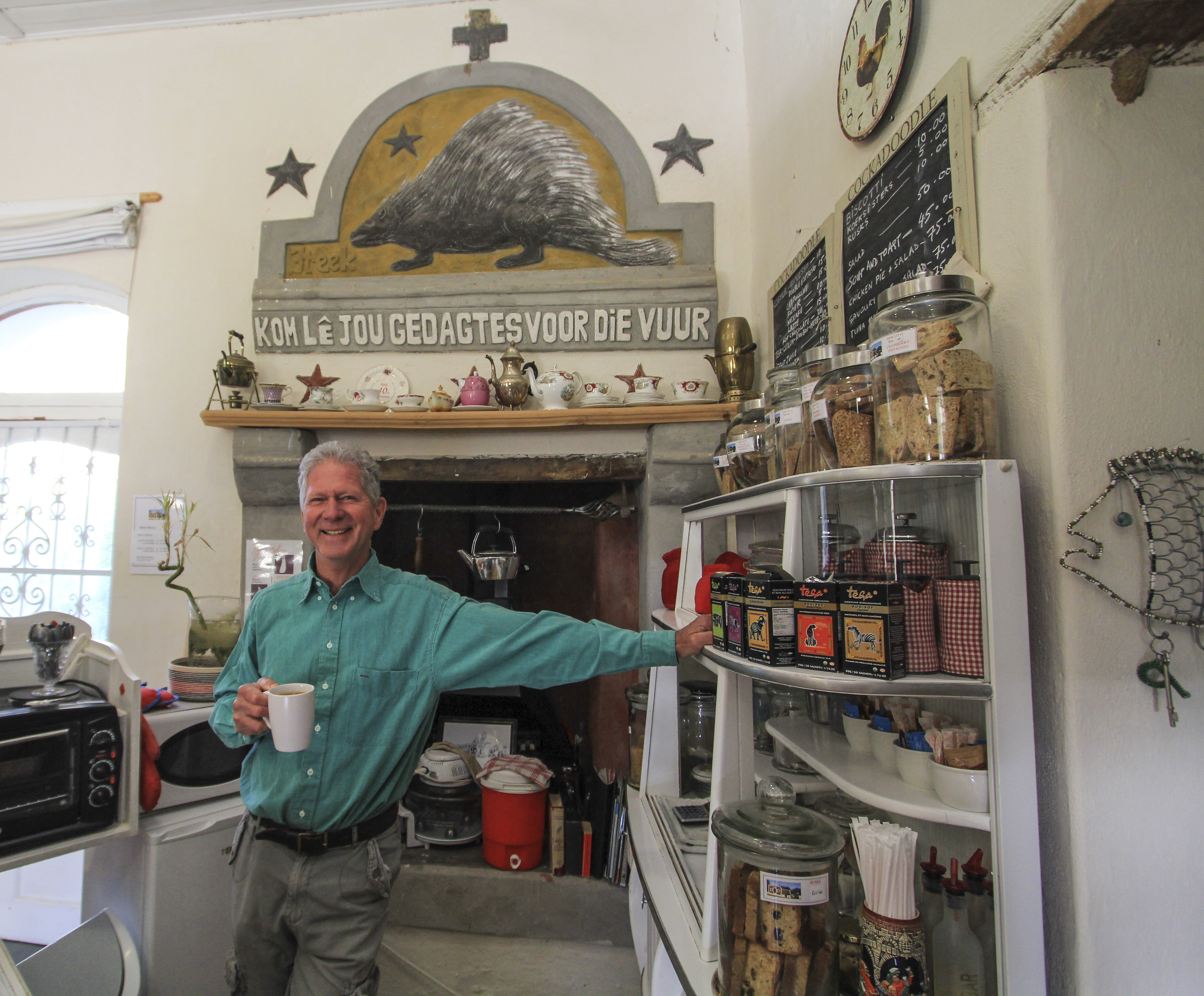
(Photo: Chris Marais)
At various strategic spots in the buildings that he converted into a guest lodging, studio and work space, he inserted little bas reliefs with sayings like:
“Kraaie kan bo die Sterre Vlieg” (Crows can Fly above the Stars)
And:
“Kom le Jou Gedagtes Voor die Vuur” (Come Lay Your Thoughts Down in front of the Fire).
And here’s the rub. Roger Young speaks hardly a word of Afrikaans, being an Engelse Soutie to the core. He’s just a country soul who has picked up some wisdom along the way, and is having fun with it.
Sylvester’s new spot
Sylvester first acquired his name and his fame when he escaped from the Karoo National Park near Beaufort West in June 2015. He was two years old – the lion equivalent of a human teenager.
Thanks to social media and 24-hour news updates, Sylvester became an overnight sensation, roaming 300km through livestock farms and the Nuweveld Mountains, leaving a trail of fevered rumours, alarmed farmers and the carcasses of 28 sheep in his wake.
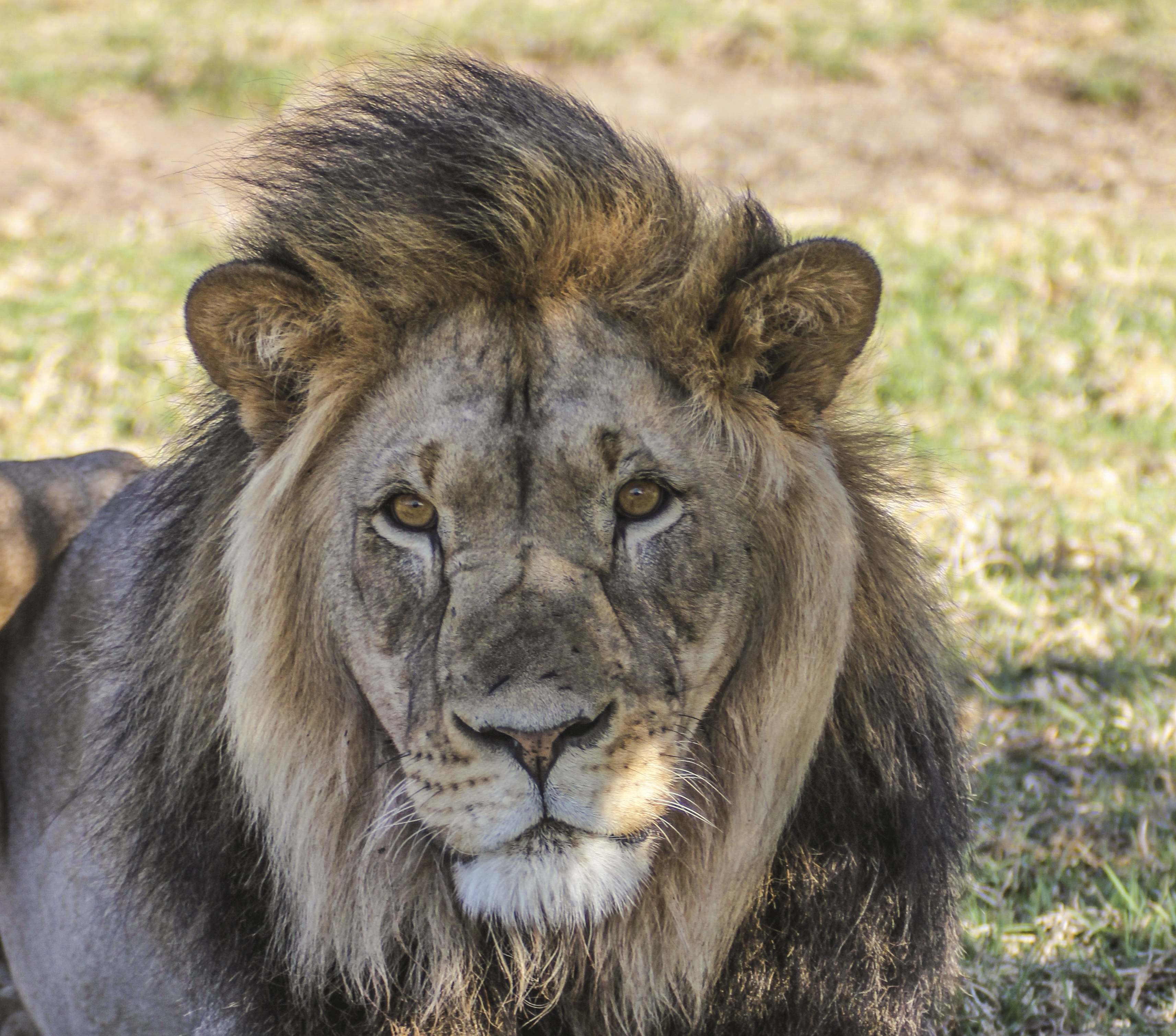
(Photo: Chris Marais)
The lion led southern Africa’s best trackers and a half dozen sniffer dogs a merry dance through the rough terrain. His capture three weeks later could not have been more dramatic, involving a freakishly tricky shot from a National Parks veterinarian wielding a tranquilliser dart gun from a helicopter.
Sylvester was returned to his former home park unconscious and swinging from a cargo bag under the chopper, a dangerous operation that began with the game capture helicopter’s blades whirring only metres away from rocky mountain tops.
By that time he’d made an R800,000 hole in SANParks’ budget. In March 2016, he broke out again. This time it was much easier to find him – he was wearing a newly fitted radio collar. Three days and one dead cow later, he was brought back home.
In May 2016, Sylvester was translocated to Kuzuko Lodge in the Eastern Cape, where he happily spawned a brood of cubs.
Texas Jack comes to town
Back in 1903, the dashing mountain zebra of the Bankberge in the Eastern Cape Karoo attracted the attention of a troupe of American circus riders, led by one Texas Jack Jnr.
The famous showman’s Wild West Circus went all over South Africa, and was a special hit with the mining camps of the Reef and the little platteland towns everywhere.
It was in South Africa that Texas Jack met and trained Will Rogers, who was to become an iconic cowboy roper and rider.
However, on this occasion Texas Jack Jnr’s crew chased these wild, striped equines up and down the valleys outside Cradock, through the very area that would later become the famous Mountain Zebra National Park.

A zebra in the veld. (Photo: Chris Marais)
Sceptical locals gathered with picnic baskets to watch the spectacle, as the cowboys actually managed to capture some.
The most dramatic incident came later when one of the circus riders, Mexican Bill, accepted a bet that he could ride a wild zebra.
Paul Michau, whose farm now forms an integral part of the park, reported that Mexican Bill lassoed one of the untamed zebras, leapt down from his horse’s back, threw a saddle over the zebra “and with great intrepidity”, rode down the mountainside to the homestead.
It was, in Michau’s words, “a feat I would never have deemed possible had I not myself witnessed it”.
Texas Jack Jnr died in Kroonstad in 1905. He was survived by his partner Lil Marr, a sharpshooter in his travelling show.

Karoo donkeys (Photo: Chris Marais)
No goats allowed
“You see that mountain range over there? And then the one after that? That’s where my donkeys are. One of these days I’ll have to go and get them.”
Koos Stoffel of Eksteenfontein is pointing at a spot so deep into the Richtersveld that it might as well be up in Namibia.
“Why are they all the way over there, when you are all the way over here?” we ask.
“They want to wander far away, because donkeys don’t like goats. They don’t want to be anywhere near goats. Few people know that,” says Koos, glaring at a shepherd passing by with his raggedy flock. DM
For an insider’s view on life in the Karoo, get the Three-Book Special of Karoo Roads I, Karoo Roads II and Karoo Roads III by Julienne du Toit and Chris Marais for only R800, including courier costs in South Africa. For more details, contact Julie at [email protected]









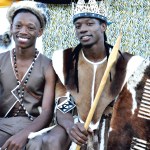









Comments - Please login in order to comment.